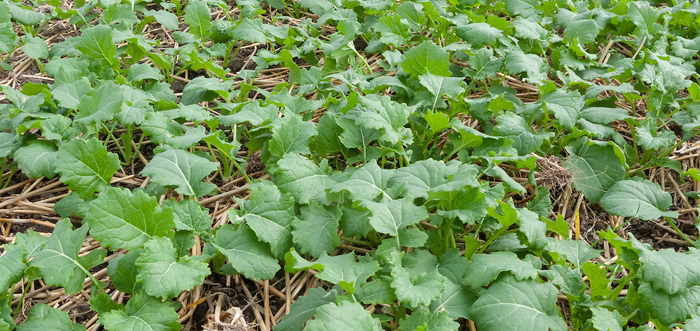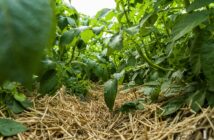With the first signs of phoma now appearing, Agrii agronomist Louisa Kenney, says growers should consider adding some foliar nutrition to a fungicide application.
“Crops that went in early look very well; they had enough moisture to get away and have kept going. Later-drilled crops will require regular rainfall to get to where we want them to be, and we will also consider foliar nutrition to reduce stress and enhance rooting.”
To help later-drilled crops catch up to where they are expected to be, Tim Horton, Agrii combinable crops technical manager recommends growers consider foliar nutrition this autumn to help develop root systems and canopies heading into winter.
“A good starting point is something like Nutriphite PGA, which is phosphite plus pyroglutamic acid (PGA). It’s the PGA that affects carbon fixation and nitrogen use efficiency. And it’s the phosphite which is affecting the availability of the phosphate by mobilising phosphate in the root zone. Combining both promotes root development.
“This creates a virtuous circle. The exudates are making more phosphate available due to the improved root structure, which in turn increases the available phosphate.
“Nutriphite PGA can be used from the two-leafed stage onwards. Applying it will boost the rooting and increase the plant’s resilience. You can apply this multiple times through the autumn and winter if needed,” explains Tim.
Another product Tim recommends for developing OSR crops this autumn is Quark, which contains zinc acetate and a small amount of nitrogen. He says that zinc promotes oilseed rape root development, much like in cereals, where it is often applied with T0 fungicides.
“Really, it’s a programmed approach to enhance the plant’s growth through the autumn. Quark can go on earlier, from the cotyledon stage onwards. It’s ideal for reducing stress in struggling backwards crops, which may be the case with some later-drilled crops this year,” he adds.
When it comes to fungicide choice, Louis says it depends on whether some plant growth regulation may be required, with tebuconazole or prothioconazole favoured for disease control and metconazole if the canopy looks too large. However, reduced sensitivity of Phoma to tebuconazole has been known, and Louisa says control should be closely monitored.
“There can be a reluctance to spend too much on oilseed rape until the spring, when it’s known if there is a crop to take to harvest, but I think you have to be careful with this sentiment. If you keep disease at bay, even with a bit of tebuconazole, and do your best to have a healthy crop going into winter, you will be helping your crop when it comes to the spring.




